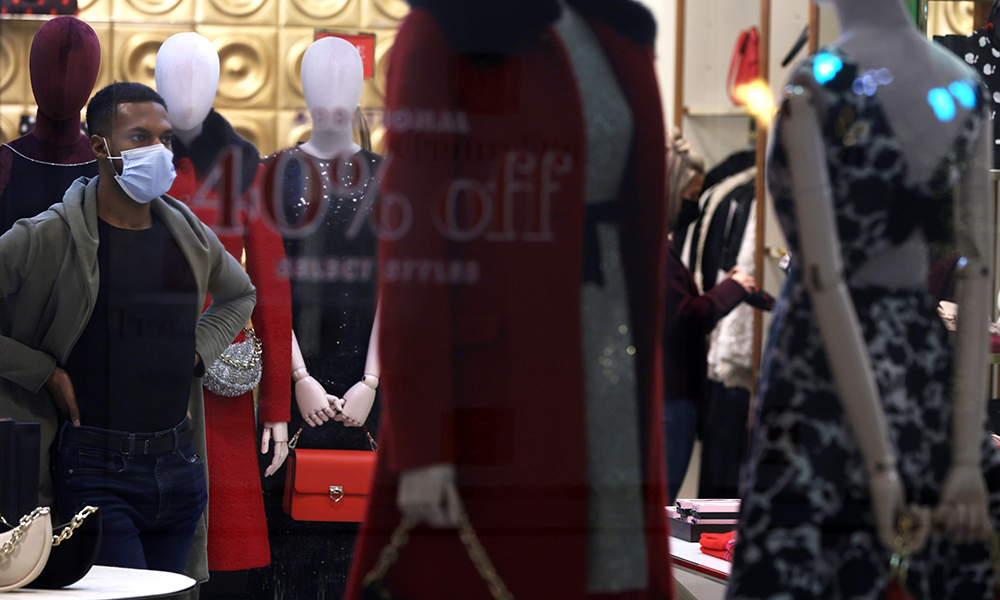“大辞职潮”重创零售业

我们在全球疫情最为严重的时候迈入了2021年,这场疫情导致了劳工短缺和供应链问题以及数十年以来的最高通胀率。2021年在一场完美风暴中画上了句号,消费者彻底改变了他们对购物方式的认知,而且是永久性的。
安永(EY)最近的未来消费指数(Future Consumer Index)显示,超过半数的美国民众认为,在新冠疫情期间所养成的行为习惯如今已经常态化,而且49%的民众认为其生活在后疫情时代依然会与以往存在巨大的差异。
早在新冠疫情出现之前,就有传闻称消费产品和零售行业已经变得十分脆弱。新冠疫情及其变种只是加速了这些问题,并助长其发展成为避无可避的态势。我们无需去问“它何时才能结束?”,而是应该意识到这场完美风暴难以在近期结束,同时消费者已经重新调整了对零售商和品牌的期许。
大辞职潮重创零售业,而且其影响远未结束
2021年9月,创纪录的68.5万名零售商关门大吉。同一月,440万美国民众辞去了工作。除了面对大辞职潮(Great Resignation)之外,零售行业将不得不应对规模日渐萎缩、关注点不断变化的劳动力资源。
雇员,尤其是Z世代,不再愿意为那些没有明确目的,以及无法满足其不断变化的公平薪酬和灵活性需求的公司工作。最近安永的Z世代市场细分调查的发现甚至更能够代表未来的趋势,近三分之二的Z世代受调对象认为,自己所效力的雇主应该与其有共同的价值。
在这个工作条件并非普通的朝九晚五的行业,这一现象更是如此,而且可能更具挑战性。2022年,零售商将需要重新定义其人才计划,以及股东和雇主价值的意义。对零售商来说,劳动力是品牌体验的前沿阵地。当劳动力不存在或缺乏专注度时,服务品质和消费体验就会出现问题。
尽管通胀当头,但消费者愿意花钱
我们看到,通胀率创下了39年来的新高。然而,消费者依然愿意(而且希望)在生活成本增长的情况下去花钱,其原因可能并非是薪资的不断上涨,而是不断限制消费者购买所需商品能力的供应链并发症。消费者有钱去肆意挥霍,而且也愿意购买可以买到的商品,哪怕是为此支付溢价。
尽管消费者在当前愿意购买价格更高的物品,但这一意愿能够维持多长的时间?转折点在哪?不断变化的利率和市场环境,以及病毒新变种持续的影响和持续的地缘政治不稳定性,将决定消费者对高价格的耐受时长。
从长远来看,消费者依然十分看重价格的重要性:我们的美国未来消费指数(U.S. Future Consumer Index)显示,58%的民众在未来将更加关注“物有所值”的理念。因此,一旦供应链恢复如初,受抑需求成为过去时,品牌和零售商或将重新调整,以应对价格带来的服务和品质新要求。
从“最后一公里”到“开始一公里”
多年来,各大公司尤为关注于最后一公里的交付,各大零售商和品牌都将这一流程作为重点,以支持向线上模式或BOPIS(在线购买,在店面取货)送货模式的转变。然而,他们并未意识到,价值的创造却始于最初的一公里。
在新冠疫情冲击前便已经存在于零售行业的脆弱和短缺问题如今已经暴露无遗。生产继续受到原材料短缺的威胁。船只无法在港口卸货。卡车运力余量所剩无几。从很多方面来看,所有的这一切对供应链来说都是一场灾难。
在今后的一年中,零售商和品牌将不得不改变其关注点,确保将数据和流程用于支持原材料采购和物流。最初的一公里需要根据“消费者至上”原则进行重新定义。
随着道德采购以及可持续性继续深入人心,这一点将变得越来越重要。消费者对可持续性的看法发生了改变,而且零售商和消费品公司也有必要对其期许做出相应的调整。我们的数据显示,三分之一的美国消费者强烈地感到,各大公司应该专注于产品和服务的负责任生产和消费。这一趋势强化了妥善处理好最初一公里的重要性。
重大调整
新冠疫情前的传言如今变得甚嚣尘上。其意料之外的影响几乎迫使各大零售商和品牌进行重大调整,不仅仅是迎合消费者看法的短期调整,同时还有长期的根本性转变。
行业领导者需要围绕人才计划的重构,以纳入机器人和自动化为目标的供应链重设,以及环境、社会和公司治理(ESG)价值的捕捉,做出重大决策。对零售商和品牌来说,这是一个决定性的时刻。如果没有迅速做出调整,它们就有可能会沦为这场完美风暴的牺牲品。(财富中文网)
凯西·格拉姆林是安永美国(EY Americas)消费行业市场的领导者。作者表达的观点不一定是安永会计师事务所(Ernst & Young LLP)或全球安永组织其他成员的观点。
译者:冯丰
审校:夏林
我们在全球疫情最为严重的时候迈入了2021年,这场疫情导致了劳工短缺和供应链问题以及数十年以来的最高通胀率。2021年在一场完美风暴中画上了句号,消费者彻底改变了他们对购物方式的认知,而且是永久性的。
安永(EY)最近的未来消费指数(Future Consumer Index)显示,超过半数的美国民众认为,在新冠疫情期间所养成的行为习惯如今已经常态化,而且49%的民众认为其生活在后疫情时代依然会与以往存在巨大的差异。
早在新冠疫情出现之前,就有传闻称消费产品和零售行业已经变得十分脆弱。新冠疫情及其变种只是加速了这些问题,并助长其发展成为避无可避的态势。我们无需去问“它何时才能结束?”,而是应该意识到这场完美风暴难以在近期结束,同时消费者已经重新调整了对零售商和品牌的期许。
大辞职潮重创零售业,而且其影响远未结束
2021年9月,创纪录的68.5万名零售商关门大吉。同一月,440万美国民众辞去了工作。除了面对大辞职潮(Great Resignation)之外,零售行业将不得不应对规模日渐萎缩、关注点不断变化的劳动力资源。
雇员,尤其是Z世代,不再愿意为那些没有明确目的,以及无法满足其不断变化的公平薪酬和灵活性需求的公司工作。最近安永的Z世代市场细分调查的发现甚至更能够代表未来的趋势,近三分之二的Z世代受调对象认为,自己所效力的雇主应该与其有共同的价值。
在这个工作条件并非普通的朝九晚五的行业,这一现象更是如此,而且可能更具挑战性。2022年,零售商将需要重新定义其人才计划,以及股东和雇主价值的意义。对零售商来说,劳动力是品牌体验的前沿阵地。当劳动力不存在或缺乏专注度时,服务品质和消费体验就会出现问题。
尽管通胀当头,但消费者愿意花钱
我们看到,通胀率创下了39年来的新高。然而,消费者依然愿意(而且希望)在生活成本增长的情况下去花钱,其原因可能并非是薪资的不断上涨,而是不断限制消费者购买所需商品能力的供应链并发症。消费者有钱去肆意挥霍,而且也愿意购买可以买到的商品,哪怕是为此支付溢价。
尽管消费者在当前愿意购买价格更高的物品,但这一意愿能够维持多长的时间?转折点在哪?不断变化的利率和市场环境,以及病毒新变种持续的影响和持续的地缘政治不稳定性,将决定消费者对高价格的耐受时长。
从长远来看,消费者依然十分看重价格的重要性:我们的美国未来消费指数(U.S. Future Consumer Index)显示,58%的民众在未来将更加关注“物有所值”的理念。因此,一旦供应链恢复如初,受抑需求成为过去时,品牌和零售商或将重新调整,以应对价格带来的服务和品质新要求。
从“最后一公里”到“开始一公里”
多年来,各大公司尤为关注于最后一公里的交付,各大零售商和品牌都将这一流程作为重点,以支持向线上模式或BOPIS(在线购买,在店面取货)送货模式的转变。然而,他们并未意识到,价值的创造却始于最初的一公里。
在新冠疫情冲击前便已经存在于零售行业的脆弱和短缺问题如今已经暴露无遗。生产继续受到原材料短缺的威胁。船只无法在港口卸货。卡车运力余量所剩无几。从很多方面来看,所有的这一切对供应链来说都是一场灾难。
在今后的一年中,零售商和品牌将不得不改变其关注点,确保将数据和流程用于支持原材料采购和物流。最初的一公里需要根据“消费者至上”原则进行重新定义。
随着道德采购以及可持续性继续深入人心,这一点将变得越来越重要。消费者对可持续性的看法发生了改变,而且零售商和消费品公司也有必要对其期许做出相应的调整。我们的数据显示,三分之一的美国消费者强烈地感到,各大公司应该专注于产品和服务的负责任生产和消费。这一趋势强化了妥善处理好最初一公里的重要性。
重大调整
新冠疫情前的传言如今变得甚嚣尘上。其意料之外的影响几乎迫使各大零售商和品牌进行重大调整,不仅仅是迎合消费者看法的短期调整,同时还有长期的根本性转变。
行业领导者需要围绕人才计划的重构,以纳入机器人和自动化为目标的供应链重设,以及环境、社会和公司治理(ESG)价值的捕捉,做出重大决策。对零售商和品牌来说,这是一个决定性的时刻。如果没有迅速做出调整,它们就有可能会沦为这场完美风暴的牺牲品。(财富中文网)
凯西·格拉姆林是安永美国(EY Americas)消费行业市场的领导者。作者表达的观点不一定是安永会计师事务所(Ernst & Young LLP)或全球安永组织其他成员的观点。
译者:冯丰
审校:夏林
We started 2021 in the thick of a global pandemic, leading us into labor shortages, supply chain issues, and the highest inflation numbers in decades. The year ended with the perfect storm, where consumers fundamentally changed the way they think about shopping, forever.
More than half of Americans agree that behaviors adopted during the pandemic now feel normal and 49% believe their life will remain significantly changed in a post-pandemic world, according to data from EY’s recent Future Consumer Index.
There were rumblings of fragility in consumer products and retail well before the pandemic. COVID-19 and its variants only accelerated these issues and brought them to an unavoidable head. Rather than ask “when will this be over?”, we need to understand this perfect storm has no end in sight. Instead, consumers have reset expectations for retailers and brands.
The Great Resignation hit retail hard–and it’s far from over
In September 2021, a record 685,000 retailers called it quits. In the same month, 4.4 million Americans quit their jobs. In addition to facing the Great Resignation, the retail industry is having to contend with a shrinking pool of labor with shifting priorities.
Employees–particularly Gen Z–are no longer willing to work for companies that are not purpose-led and that are not able to meet their evolving demands for fair pay and flexibility. Perhaps even more indicative of the future, in the most recent EY Gen Z Segmentation Study, nearly two-thirds of Gen Z respondents feel it’s important to work for an employer that shares their values.
This is especially true, and perhaps more challenging, in an industry where the working conditions are not that of your typical nine-to-five office. In 2022, retailers will need to redefine the talent agenda and what it means for shareholder and employee value. For retailers, the workforce is the front line of the brand experience. When a labor force either doesn’t exist or is not engaged, quality of service and the consumer experience are called into question.
Consumers are willing to spend despite inflation–for now
We’re seeing the highest inflation numbers in 39 years. Yet, for the first time in history, consumers are still willing (and wanting) to spend money despite the increase in the cost of living. We can attribute this not to rising wages but to supply chain complications that are limiting consumers’ ability to purchase what they want. Consumers have money burning a hole in their pockets and are willing to take what’s available, even at a premium.
While consumers are willing to take on higher price points for now, how long will it last? What’s the tipping point? Changing interest rates and market conditions, as well as ongoing complications from new variants and continued geopolitical instability, will drive how long consumers are willing to put up with higher prices.
In the long run, consumers will continue to put a premium on the importance of price: 58% will be more focused on value for money in the future according to our U.S. Future Consumer Index. So, when the supply chain opens back up and pent-up demand has passed, expect a reset for brands and retailers on the new requirements for service and quality in relation to price.
From “last-mile” to “first-mile”
For years, companies had been hyper-focused on last-mile delivery, with retailers and brands prioritizing the processes to support the shift to online or BOPIS (buy online, pick up in store) delivery. What they failed to realize was that the first mile is where value is established.
The fragility and scarcity that underpinned retail before the pandemic hit is now abundantly clear. Raw material shortages continue to threaten production. Ships are stuck in ports. Free truck capacity is hard to come by. At various points, this all spelled disaster for the supply chain.
In the year ahead, retailers and brands will have to shift priorities to secure both the data and processes around the procurement of raw materials and logistics. The first mile needs to be redefined with consumers at the center.
This will become increasingly important as the expectation of ethical sourcing and sustainability continues to gain momentum. Consumer sentiment around sustainability has changed, and expectations of retailers and consumer products companies will need to change with it. Our data reveals one in three U.S. consumers feel strongly that companies should be focused on responsible production and consumption of goods and services. This trend reinforces the importance of getting the first mile right.
A great reset
The pre-pandemic rumblings are now at a crescendo. Their unintended consequences have all but forced a great reset for retailers and brands–not a short-term adjustment to consumer sentiment but a long-term, fundamental change.
Critical decisions on reimagining the talent agenda, resetting the supply chain to include robotics and automation, and capturing the value of ESG lie ahead of industry leaders. It’s a defining moment for retailers and brands. If they don’t shift quickly, they risk being left in the wreckage of this perfect storm.
Kathy Gramling is EY Americas' consumer industry markets leader. The views expressed by the author are not necessarily those of Ernst & Young LLP or other members of the global EY organization.













